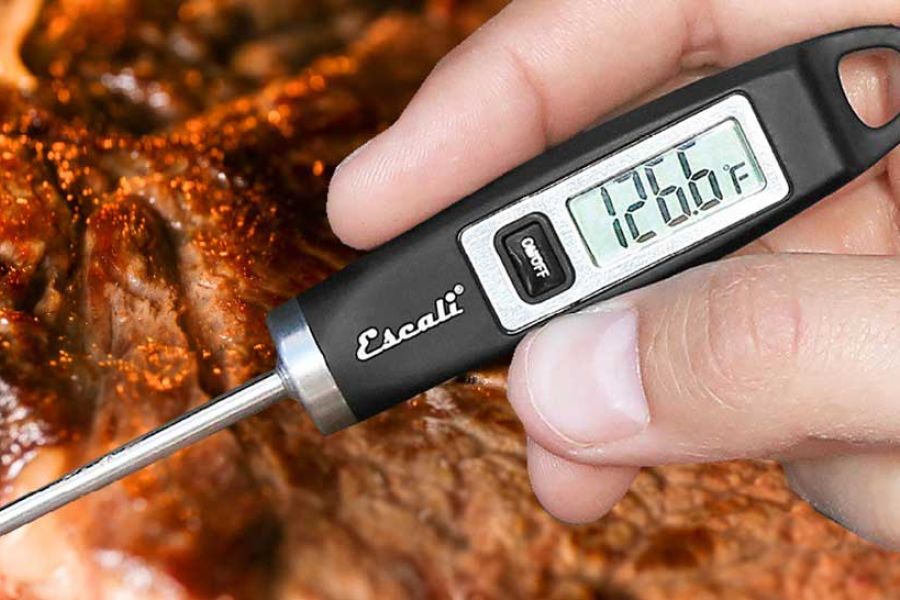
The Most Essential Tool In Your Kitchen Is A Meat Thermometer.
Take the guesswork out of cooking. You just spent a few (or several) dollars on a nice cut of meat from Hagberg’s amazing meat case. You really want to impress your guests or, at the very least, prepare it to its most succulent best. Why risk a less-than-ideal outcome by guessing how long to cook it? Knowing the exact internal temperature of the meat not only helps you avoid an over-rare steak or dried-out chicken breast, but it also lets you know whether or not it’s safe to eat, which is sort of important.
Along with some good pans and sharp knives, a meat thermometer is the most important tool in your kitchen arsenal. A meat thermometer measures cooked meat’s internal temperature to ensure it’s safe to eat and matches your personal preference and tastes.
Safe temperatures vary by cut of meat or food item. Generally, for roasts and chops, the minimal internal cooking temperature should be 145°F. You should also add a resting period of a few minutes before serving. During this brief resting period, the temperature continues to increase slightly, and the juices get absorbed back into the cut resulting in a juicier outcome. Cook poultry until the internal temperature reaches 165°F.
See the chart below for more detail.
| Product | Minimum Internal Temperature & Rest Time |
|---|---|
| Beef, Pork, Veal & Lamb Steaks, chops, roasts | 145 °F and allow to rest for at least 3 minutes |
| Ground Meats | 160 °F |
| Ground Poultry | 165 °F |
| Ham, fresh or smoked (uncooked) | 145 °F and allow to rest for at least 3 minutes |
| Fully Cooked Ham (to reheat) | Reheat cooked hams packaged in USDA-inspected plants to 140 °F and all others to 165 °F. |
| All Poultry (breasts, whole bird, legs, thighs, wings, ground poultry, giblets, and stuffing) | 165 °F |
| Eggs | 160 °F |
| Fish & Shellfish | 145 °F |
| Leftovers | 165 °F |
| Casseroles | 165 °F |
There are several types of meat thermometers. One that we like to use is the digital “instant-read” style. These aren’t meant to be left in the food while it cooks. Simply use these to check your meat when you think it’s done by placing the probe in the deepest part of the food and getting a reading in a few seconds. These thermometers are easy to use, easy to store, and easy to clean. And you’ll find some of our favorites at the end of the meat counter.







